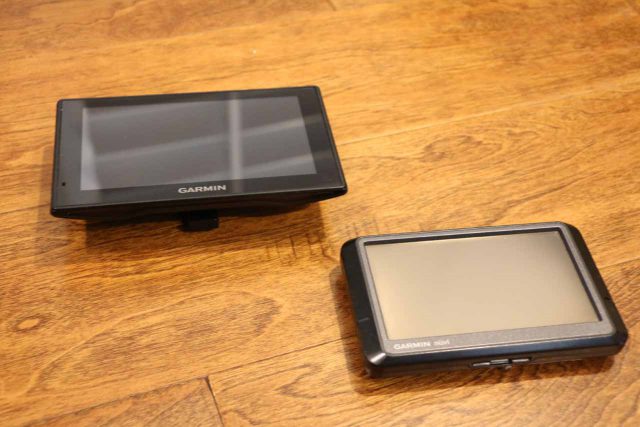Tip 4: Bring your own personal navigation GPS device (just in case)

Generally, it’s a good idea for us to have some kind of navigation device to help us get through unfamiliar places without the need for strings attached (like an international network connection for smart phones). Without GPS navigation, it would be like we’re “driving blind” and it would take even more time to get from place to place as we’d be too busy looking at road atlases and searching for signs that are likely to be easily missed. Indeed, on just about all of our self-driving trips, we’ve gone with a dedicated GPS navigation device.
For over the past 10 years, we’ve used a Garmin Nüvi that has pre-loaded maps (or at least an SD card containing the maps we need). We’ve bought or uploaded a purchased map from Mapsource for places like Europe
, Australia / New Zealand
, and even Japan. I know this is becoming less commonplace as I suppose GoogleMaps or other free maps can be loaded onto a navigation unit or smart phone, but our Garmin Nuvi and Mapsource method has served us well for the past 10 years or so, and it continues to do so. I guess I’ll finally cave in and switch once I feel confident that I’m not losing some of the control and capabilities of our existing scheme (which also lets us do trip logging). On top of the basic maps, I also upload waypoints from our trip research for attractions, accommodations, and other key landmarks.

Even though packing our own navigation device for off-line (non-internet) use might seem like overkill as some cars come with a built-in navigation system with more up-to-date and precise maps, we can’t assume that it will always be available nor be included in our rental rates. In fact, when we have had the two systems at work at the same time, we’ve encountered instances where the built-in navigation was wrong and our personal device did a better job, while we’ve had other cases where the built-in navigation was far superior to our outdated Nuvi. Then again, we’ve still had cases where both navigation systems were wrong or misleading. So I guess none of these systems are fool-proof, and there will be some instances where we have to trust our experience and instincts when the GPSes are wrong. That said, I generally rely on the built-in navigation for cities (where the up-to-date info becomes critical when negotiating one-way streets, roundabouts, dead-ends, and restricted traffic areas), and I generally rely on our own navigation system for rural areas.
Finally, we want to reinforce that even if you remember to bring the navigation unit, don’t forget to bring the necessary accessories that go with it like the car charger and the GPS mount. We’ve had a few close calls where we had to drive without the benefits of our own navigation system working. For example, on our France trip, I forgot to pack the car charger so we were without our Nuvi for most of the province of Normandie until we finally found a store that stocked such a charger in the Lyon train station. In another instance, I had forgotten to pack the GPS mount, and we learned firsthand how surprisingly difficult and distracting it was to use the GPS nav system without a mount. Then, when you return the rental car, don’t forget to remove that easily forgotten mount. We made that mistake (leaving the mount clinging to the windshield) when we returned the car in Calgary, Alberta on a Canadian Rockies trip. Moreover, we’ve had a handful of other close calls of nearly leaving that mount behind over the years so we can certainly appreciate how easy it is to lose these things.
Visitor Comments:
Got something you'd like to share or say to keep the conversation going? Feel free to leave a comment below...No users have replied to the content on this page
